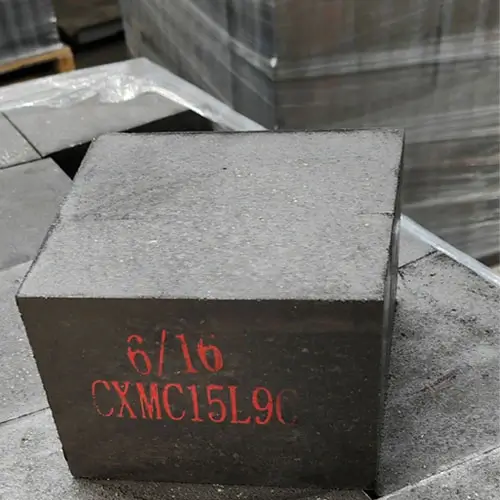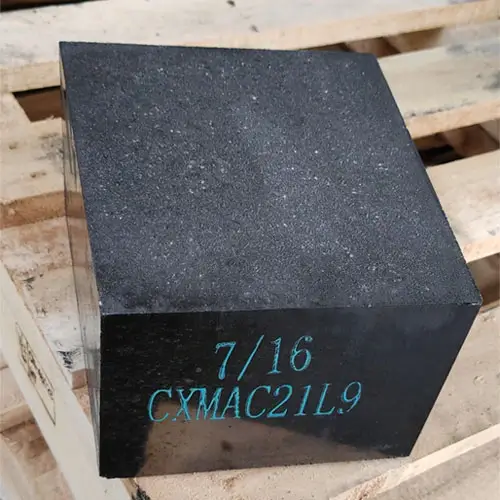In the process of refractory brick masonry, usually use refractory mud for masonry, and can not choose refractory cement for masonry, although both belong to the refractory material, but in the actual application of the process there is a big difference.
Refractory mud, also known as fire clay or jointing material, is a jointing material specially used for refractory brick masonry, consisting of refractory powder and additives, with good plasticity, easy construction, bond strength, corrosion resistance, and high refractoriness. Refractory cement, also known as aluminate cement or high alumina cement, is a necessary material for the preparation of refractory castables, which is usually used in the refractory castables for cementing between powders, and at the same time, it can make the refractory castables play a hardening role.
The main reasons why refractory cement should not be used for masonry of refractory bricks are as follows:
1.Differences in bonding and hardening methods between refractory clay and refractory cement. Refractory mud has good plasticity and bonding, can form a ceramic bond at high temperature, provide sufficient strength and stability. Refractory cement compared to refractory mud bonding differences exist, while its hardening method also differs from that of refractory mud, refractory cement is usually a water-hardening cementitious material.
2.Refractory mud and refractory cement construction methods are different. In the refractory brick masonry, refractory mud is usually through the wet construction, to ensure that the bricks and bricks close to each other. Refractory cement is usually used in prefabricated parts or poured on site for on-site construction.
3.There are differences in chemical properties. Refractory cement’s properties at high temperatures, such as thermal stability and slag resistance, make it more suitable as a jointing material for masonry. Refractory cement, on the other hand, although it also has high-temperature properties, may not be suitable for direct use as a jointing material for masonry refractory bricks because of its properties such as thermal expansion and thermal conductivity.
4.There are differences in use. The choice of refractory clay should match the temperature of the part where it is to be used, e.g. high alumina refractory clay is recommended for high alumina bricks, while clay refractory clay is used for clay bricks . Refractory cements, with their high aluminum content, are more often used as high-temperature binders for the preparation of refractory castables.
This is why refractory cement can not be masonry refractory bricks, although refractory cement and refractory mud in the aluminum content are higher, but the main reason is the bonding and hardening method of the differences between the two in the process of use.

More details about refractory brick
What is the difference between firebrick and refractory brick?
Composition: Refractory bricks, including SiC refractory bricks, are typically made from materials like silicon carbide, alumina, zirconia or are containing a higher amount of mullite. Fire bricks, on the other hand, are primarily composed of clay minerals and alumina or mullite in lower quantities.
What is refractory used for?
In the metallurgy industry, refractories are used for lining furnaces, kilns, reactors, and other vessels which hold and transport hot media such as metal and slag.
What does a firebrick do?
The purpose of firebricks is two-fold. Firstly, they act as insulation, holding the heat within the firebox and secondly, by protecting the outer casing of the stove from overheating, which could cause it to crack if it is made of cast iron, or distort if it is made of steel.
Why is refractory brick radioactive?
The ore that is mined for use as refractory brick (i.e., bauxite) is commonly found in the presence of naturally occurring radioactive elements, such as uranium and thorium. These elements often end up in the finished brick, to a greater or lesser degree, depending upon their concentration in the ore.
What is a refractory brick?
A fire brick, firebrick, fireclay brick, or refractory brick is a block of ceramic material used in lining furnaces, kilns, fireboxes, and fireplaces. A refractory brick is built primarily to withstand high temperature, but will also usually have a low thermal conductivity for greater energy efficiency.
How to tell if a brick is a firebrick?
Firebrick is more dense (and therefore heavier for its size), has a smoother texture, and is more costly than common brick. Another difference is in color. While there are variances in hue and shade, common brick typically comes in warm, earthy colors.
Is refractory brick hazardous?
The waste refractory brick/mold and ash may be a hazardous waste due to high concentrations of chromium in the stainless steel. Consequently, these wastes must be treated as hazardous waste unless laboratory analysis demonstrates the wastes as being non-hazardous.
What is the purpose of a firebrick?
Fireplaces, wood-burning stoves, and industrial furnaces make use of firebrick for its ability to deal with high temperatures without breaking a sweat (or a brick), to keep heat where it belongs, and to help diminish some of the hazards involved with fire.

